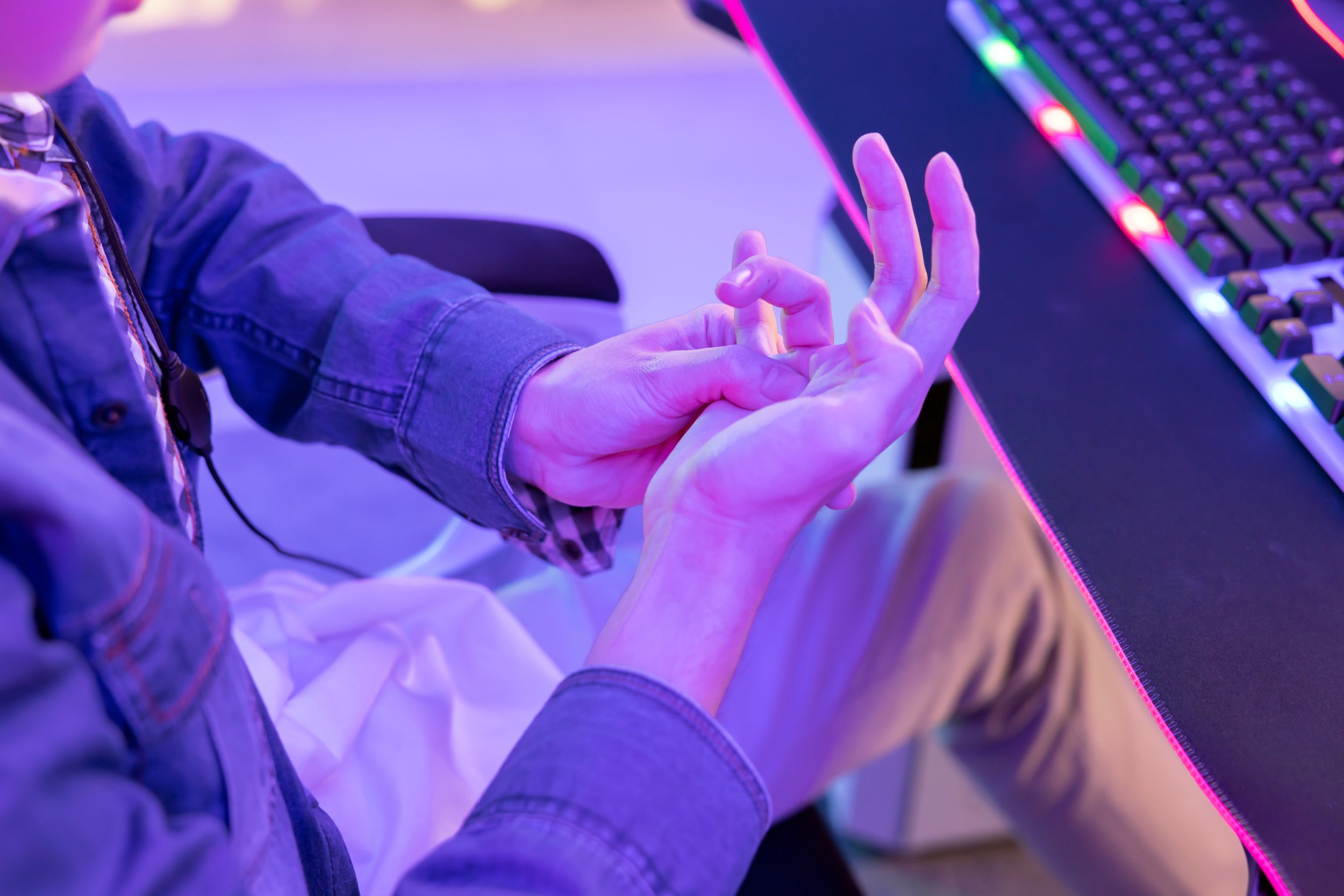Gamer’s Thumb
Stress from Gaming
Gamer’s Thumb
The most common and widely known injury video gamers experience is Gamer’s thumb.
Also known as deQuervain’s syndrome or Gamer’s wrist, Gamer’s thumb is a repetitive strain injury that affects the tendons in the thumb, resulting in thumb and wrist pain. The disorder is common in gamers who frequently use controllers, and often in non-gamers who use smart-phones and keyboards.
Symptoms of Gamer’s Thumb:
Pain or tenderness in the base of the thumb or around the wrist, especially during or after play.
Swelling in the affected area.
Stiffness or a reduced range of motion in the thumb or wrist, especially during or after play.
Pain when gripping or holding objects, such as a controller or phone.
A "catching" or "clicking" sensation when moving the thumb
What causes gamer’s thumb?
In terms of gaming, the most common cause of this disorder is the repetitive motion of console or keyboard play. Like most of us, we get caught up in a game and forget to take rest breaks, causing excessive strain on our thumb and wrist tendons.
Treatment for Gamer’s Thumb or Wrist Pain
Dry Needling: Noelle at New Moon Physiotherapy is an expert in dry needling which will relieve muscle and tendon tension, reduce tendon inflammation, improve blood flow, improve strength and flexibility, and reduce pain.
Stretching: Here are some sample stretches that may be beneficial to your gaming injury:
Thumb Stretch
Hold your hand out in front of you with your fingers straight
Gently pull your thumb back with your opposite hand until you feel a stretch in your thumb and wrist. Hold 30 seconds and repeat 3 times.
Wrist Flexor and Extensor Stretch
Extend your arm in front of you, palm facing up.
Use your opposite hand to gently pull back on your fingers to stretch your wrist flexors.
For wrist extensors, flip your palm down and gently press your fingers toward the ground.
Hold each stretch for 30 seconds, repeating 3 times per position.
Physiotherapy: New Moon Physiotherapy can provide soft tissue mobilization and modalities such as IASTM, Graston Technique and joint mobilizations tailored to your specific needs.
Ice and Rest: Icing after play can help reduce swelling and muscle irritation experienced with prolonged gaming. And though no one wants to hear it, taking rest breaks during play can greatly reduce the repetitive strain on your tendons and muscles. Take a break, do a few stretches, and get right back into the game!
There is hope
Gamer’s thumb doesn’t have to be the end of your gaming. With the proper treatment and education in preventive measures, you can get back to the sport you love in no time.

